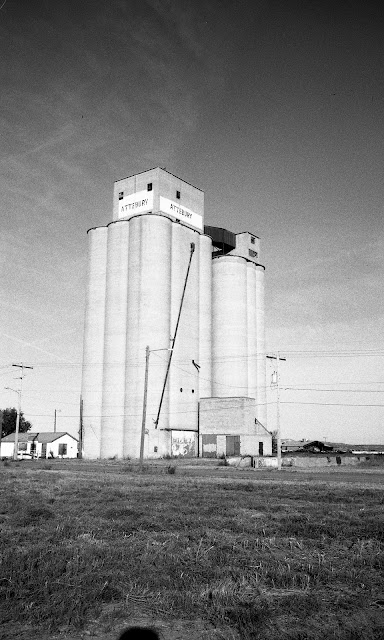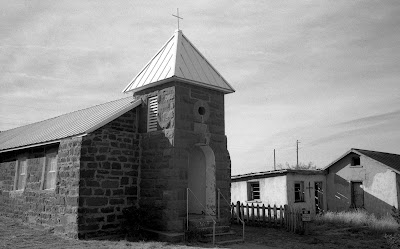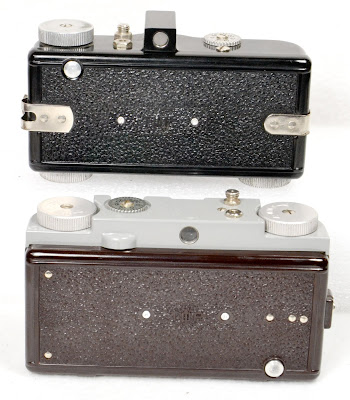Lomography continues to surprise us with its array of films, and the two b&w cine films in its latest offering - Babylon 13 and Fantôme 8 certainly will appeal to a smaller group of photographers. Before I discuss these two "new" films, I should add that they fall within Lomography's Kino subset of films - purported to give cinematic effects to your images. These four b&w films - Berlin, Potsdam, Fantôme, and Babylon are rebranded Orwo cine film stocks. I previously
reviewed Berlin and Potsdam in 2020.
 |
| The Lomo Kino family (from Lomography) |
I give credit to whoever writes the ad copy for Lomography:
From the Babylon Kino page -- "Delicately capture the details of life’s most emotive moments with this moony-eyed monochrome." and the Fantôme Kino -- "Effortlessly evoke the theatre in your everyday life with this show-stopping black and white beauty."
So if that doesn't pull you in, there's more:
Fantôme Kino-
"This panchromatic is perfect for seasoned professionals and creative first time photographers alike. Particularly appropriate for those who like to take full manual control and experiment with flash photography, the Fantôme Kino B&W Film packs drama into the frame with crushed shadows and super high contrast renderings, reminiscent of our favourite Film Noir classics."
The key takeaway here should be that these are low-ISO films and at ISO 8 (Fantôme) and 13 (Babylon), they are not going to be used in your crappy plastic Lomo cameras. You'll need an SLR or a decent rangefinder camera that can meter to and ISO of at least 12, preferably 6. Or, use a handheld meter or phone app that can meter at low ISOs. Since they are so slow, a tripod will greatly assist in making the longer exposures.
The other factor to consider, is that both of these stocks were created for cinematic uses, not for conventional still photography. Just as I wrote about Kodak's cine films on the Film Photography Project Blog, some b&w cine films are used for effects, titling, and making direct copies from the negatives. The specialized films have narrower exposure latitude, may be orthochromatic, and will almost certainly have a low speed.
The great thing is that Lomography decided to offer them as something that may get your creative juices flowing, and allow you to experiment with some film stocks that you might never see otherwise. After all, ORWO isn't the most expressive film company, and they cater to professional cinematographers, not a bunch of amateur shutterbugs. So having Lomography do the hype and selling of these films is a sure way to have people try them.
I purchased these films from B&H and of course, they arrived very quickly. I bought two rolls of each, and shot a roll of each a few months ago.
Lomo Kino Fantôme 8
If you can set your camera ISO to 8, that's great. If it only goes to 12, you can dial in +2/3 of a stop for the extra exposure that is needed. I loaded my Nikon F100 with the Fantôme, and shot the entire roll along the French Broad River at Ledges Whitewater Park. It was getting close to sunset, and my exposures were between 8 and 12 seconds. I was using a 28mm Nikkor at f/16. I felt that the long exposures would be interesting with the moving water and shadows on the water. Tripod, of course.
I developed the film in FPP's D-96 for 6.5 minutes at 20°C. The film base is clear, and curls like crazy when dry. It wasn't much of a problem to scan though, as the curl is lengthwise, and not cupping the negatives. The scans did not need much tweaking, and I really loved the results - moody, sharp as a tack, and I think it's one of those films that have a special use - and it works perfectly for what I was shooting.
Lomo Babylon 13
I loaded my Nikon F4 with the roll of Babylon, and set the ISO to 12. I also used the 28mm Nikkor with a yellow K12 filter and polarizer to get dramatic skies that I knew were coming in that day. The clouds were coming towards the Blue Ridge Parkway, and it didn't take me too long to shoot the 36 exposure roll. I also used a tripod. I developed the film in HC-110B for 8.5 minutes at 20°C. The film base isn't absolutely clear like the Fantôme. I had some odd vertical stripes show up on some frames, and I don't know the exact cause, though they look like a light leak . The skies were appropriately dramatic, though the film's shadow detail could be better. I may have to shoot the next roll on a cloudy day and a different subject and see what I get.





Of the two films, I liked the results from the Fantôme better, but both could use more testing, as a single roll doesn't tell me much, except what I got under quite different circumstances. One thing that I am not a fan of is the plastic film cassette that Lomo has been using for these films. I usually pop open the metal cassettes, but with the plastic two-piece cassettes, I end up having to use a leader retriever and then pull the film out of the cassette. So long as you know this ahead of time, it's not so bad.
Are these films for you? If you like experimenting with low-ISO films, I recommend them. They are not snapshot films in any sense. Home-developing is almost a must. The only other way to try these films would be to buy a 200 ft reel from Orwo, which for most of us, is not going to happen. At about $9 for a 36-exposure roll, they are not that expensive, and many places are selling the films. If it's your first foray into slow films, be patient and use a tripod!




















































